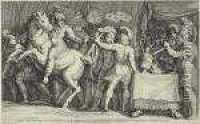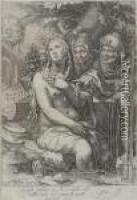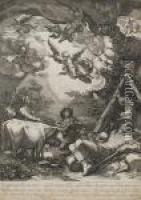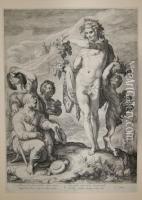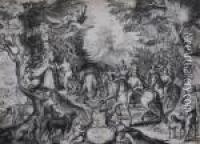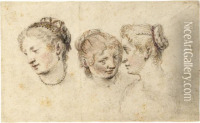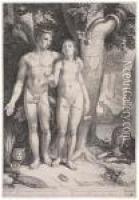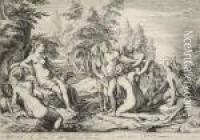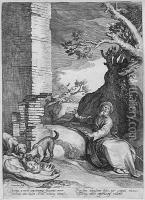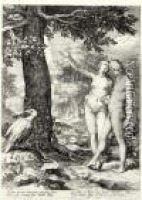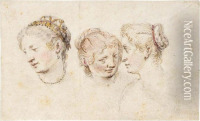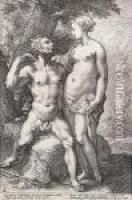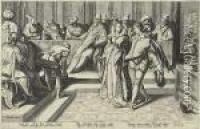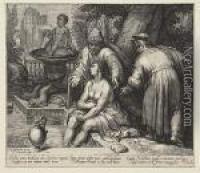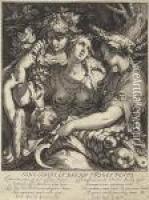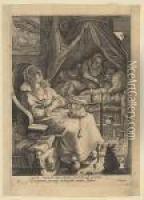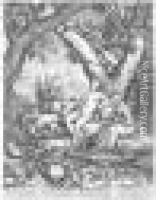Jan Pietersz. Saenredam Paintings
Jan Pieterszoon Saenredam was a Dutch Northern Mannerist painter, printmaker and draftsman known for his distinctive style of engraving. He was born in Zaandam, a city north of Amsterdam, in 1565. Not to be confused with his more famous son, Pieter Jansz Saenredam, who was renowned for his architectural paintings, Jan Pieterszoon's work primarily focused on mythological and religious subjects, often infused with allegorical elements.
Saenredam's father was a notable publisher and his family was imbued with an appreciation for the arts and literature. This cultural environment likely influenced his early interest in art. He began his artistic training in Amsterdam and later moved to Haarlem, where he became a student of the influential engraver Hendrick Goltzius. Goltzius had a profound impact on Saenredam's technique and style.
Throughout his career, Jan Pieterszoon Saenredam produced a body of work that was characterized by its elegant figures, sophisticated use of line, and a preference for classical proportions. His engravings often depicted scenes from ancient mythology, and he was known to collaborate with contemporary poets, creating images that complemented their literary works.
Saenredam was also known for his role in disseminating Mannerist style throughout the Dutch Republic. His prints were widely circulated, making him one of the key figures in the spread of this artistic movement in the region. Unlike his contemporaries who often focused on the more naturalistic depictions that would come to characterize the Dutch Golden Age, Saenredam's works retained a stylized, idealized quality.
Jan Pieterszoon Saenredam passed away in 1607 in Haarlem. Although not as well-known today as his son, his contributions to Dutch Mannerism continue to be recognized by art historians. His works can be found in various museum collections and are studied for their intricate details and emblematic content.
